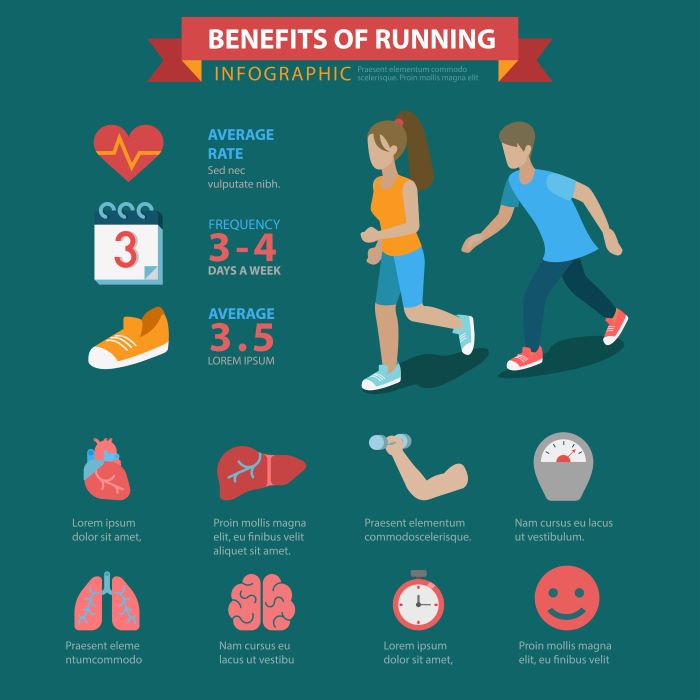Before diving into the jogging vs running for fat loss debate, it’s essential to understand the fundamental differences between these two popular forms of exercise. Both jogging and running are cardiovascular activities that boost heart health, improve endurance, and help with weight management. However, they vary significantly in terms of pace, intensity, and overall impact on the body.
Jogging is typically defined as a slower pace, usually between 4 to 6 miles per hour. This moderate intensity allows individuals to maintain a conversation while exercising, making it an accessible option for beginners or those looking to ease into a fitness routine. Jogging primarily engages the aerobic system, promoting fat burning while being less taxing on the joints.
On the other hand, running generally occurs at a faster pace, exceeding 6 miles per hour. This higher intensity workout increases heart rate significantly, leading to a greater calorie burn in a shorter amount of time. Running can also involve interval training, where periods of high intensity alternate with recovery, further enhancing fat loss potential.
Ultimately, the choice between jogging and running depends on individual fitness levels, goals, and personal preferences. For those seeking to lose weight, understanding these differences can help tailor a workout routine that suits their needs.
Visit our website to learn more and get started today! Click here.
Caloric Burn Comparison: Jogging vs Running

When it comes to achieving fat loss, understanding the caloric burn associated with both jogging and running is crucial. The number of calories burned during these activities varies based on several factors, including a person’s weight, exercise intensity, and duration.
On average, a person weighing around 155 pounds can expect to burn approximately 298 calories during a 30-minute jogging session at a moderate pace of 5 mph. In contrast, the same individual would burn about 372 calories in the same time frame while running at a brisk pace of 6 mph. This significant difference highlights how running can lead to higher caloric expenditure in less time.
Moreover, running can further amplify caloric burn due to the afterburn effect, known as excess post-exercise oxygen consumption (EPOC). This phenomenon occurs when the body continues to burn calories at an elevated rate after the workout has ended, particularly following high-intensity runs or interval training sessions.
In addition, incorporating variations such as hill running or sprint intervals can enhance caloric burn even more, making running a potent option for those focused on fat loss. However, it is important to note that individual results may vary, and factors like fitness level and metabolic rate play a role in overall caloric expenditure.
Impact on Weight Loss: Jogging or Running

The impact of jogging versus running on weight loss is a subject of interest for many fitness enthusiasts. Both forms of aerobic exercise are effective for shedding pounds, but they do so through slightly different mechanisms. While jogging is often considered a lower-intensity workout, it still offers substantial benefits for weight management.
Jogging, typically performed at a pace of 4 to 6 mph, can be sustained for longer durations, making it ideal for those new to exercise or those looking to build endurance. This extended duration means that even at a lower intensity, it can lead to significant caloric burn over time, contributing to a caloric deficit essential for weight loss.
On the other hand, running, particularly at faster speeds, tends to engage more muscle fibers and increases heart rate, leading to a more substantial caloric burn in a shorter amount of time. This higher intensity can also enhance metabolic adaptations, making your body more efficient at burning fat.
Furthermore, research suggests that running can improve body composition more effectively than jogging, as it tends to promote a higher reduction in body fat percentage. However, the best choice depends on an individual’s fitness level, preferences, and overall goals.
Ultimately, whether one chooses jogging or running, the key to effective weight loss lies in consistency and enjoyment of the activity. Finding a rhythm that fits your lifestyle will ensure long-term success in your weight loss journey.
Benefits of Jogging for Fat Loss

Jogging is more than just a leisurely pace; it offers numerous benefits that make it a powerful ally in the quest for fat loss. Its accessibility and relatively low impact on the body are just the beginning of its advantages. Here are some key benefits of jogging for fat loss:
- Enhanced Caloric Burn: Jogging at a steady pace can burn a significant number of calories, depending on factors like speed, duration, and individual weight. Even at a moderate pace, the caloric expenditure can add up quickly, aiding in creating a caloric deficit necessary for weight loss.
- Improved Cardiovascular Health: Regular jogging strengthens the heart, increases lung capacity, and lowers blood pressure. A healthier cardiovascular system supports efficient fat metabolism, making it easier to lose weight.
- Increased Endurance: Over time, jogging enhances stamina and endurance, allowing individuals to engage in longer workouts. This increased duration can lead to greater fat loss as more calories are burned.
- Mood Enhancement: Jogging releases endorphins, often referred to as ‘feel-good’ hormones. This natural high can reduce stress and emotional eating, creating a more favorable environment for weight loss.
- Flexibility in Routine: Jogging can easily fit into various schedules and environments, whether on a treadmill, a track, or natural trails. This flexibility helps individuals maintain consistency, which is crucial for successful fat loss.
Incorporating jogging into your fitness routine can provide these benefits and more, making it a valuable option for those looking to lose fat while enjoying their workouts.
Advantages of Running for Fat Loss

While jogging offers numerous benefits, running takes fat loss to another level. This high-intensity workout not only increases caloric burn but also delivers a range of advantages that can significantly contribute to weight management. Here are some notable benefits of running for fat loss:
- Higher Caloric Burn: Running generally burns more calories than jogging due to its increased intensity. This means that for those looking to accelerate their fat loss, incorporating running can be a more effective strategy.
- Boosted Metabolism: The high intensity of running can elevate your metabolism even after the workout is over. This phenomenon, known as excess post-exercise oxygen consumption (EPOC), allows for additional calorie burning in the hours following your run.
- Improved Muscle Tone: Running engages various muscle groups, especially in the legs and core. This engagement not only aids in fat loss but also helps in sculpting a toned physique.
- Time Efficiency: For those with busy schedules, running can be a time-efficient way to achieve a high-calorie burn in a shorter duration compared to jogging. This makes it easier to fit workouts into a packed day.
- Enhanced Mental Resilience: The challenges posed by running can build mental toughness, which can translate into improved discipline in other areas of life, including diet and fitness routines.
The combination of these advantages makes running an excellent choice for anyone committed to fat loss and overall fitness improvement.
Choosing the Right Option for Your Goals
When it comes to jogging vs running for fat loss, the best choice ultimately depends on your individual fitness goals, preferences, and physical condition. Both activities have unique benefits, and understanding these can help you make an informed decision:
- Fitness Level: If you are a beginner or returning from an injury, jogging might be a more suitable option to ease into physical activity without overwhelming your body.
- Weight Loss Goals: For those focused on losing weight quickly, running may provide a more efficient calorie burn, helping you reach your fat loss targets sooner.
- Time Constraints: If you have limited time to work out, running can offer a significant caloric burn in a shorter period compared to jogging.
- Personal Enjoyment: Ultimately, the best exercise is one that you enjoy. If jogging feels more comfortable and enjoyable, it might encourage consistency, which is key to long-term success.
It’s essential to consider these factors when choosing your workout routine. Remember, the journey to fitness freedom is personal, and what works for one person might not work for another.
Ready to explore tailored workouts that fit your unique goals? Visit our website to learn more and get started today! Click here.


